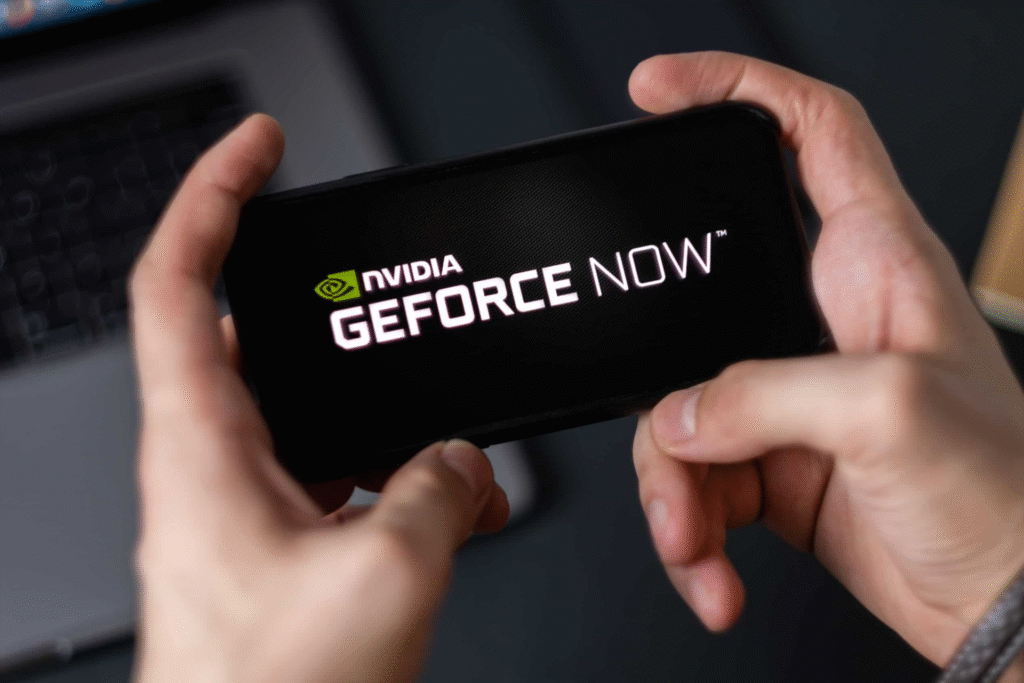GeForce Now’s arrival comes with a major upgrade, making it a standout for tech enthusiasts. Nvidia is rolling out its RTX 5080 GPUs to the service’s Ultimate tier, enabling features like DLSS 4 and Multi Frame Generation for smoother, more detailed graphics. This upgrade, described by Nvidia as the biggest in GeForce Now’s decade-long history, ensures Indian gamers can experience AAA titles like Borderlands 4 or Total War classics at up to 4K resolution and 240 frames per second. The service connects to digital storefronts like Steam, Epic Games, and Ubisoft, letting users play their existing game libraries on devices as humble as a smartphone or as powerful as a Steam Deck.
The Mumbai data center is a game-changer for latency, a longtime concern for Indian gamers relying on distant servers. Nvidia’s blog highlights that the RTX 4080-powered facility will deliver near-native performance, requiring only a stable internet connection—45 Mbps for 4K streaming, though 15 Mbps suffices for 720p. This infrastructure investment, paired with the service’s expansion to Thailand, Peru, Chile, and Colombia, underscores Nvidia’s global ambitions to make high-end gaming accessible anywhere.
A Tiered Approach to Gaming
GeForce Now offers flexibility with its subscription tiers, catering to diverse budgets and needs. The free tier, ad-supported and limited to one-hour sessions at 1080p, is ideal for casual players testing the waters. The Performance tier, priced globally at around $9.99 monthly, unlocks RTX-enabled machines, 1440p streaming, and six-hour sessions with up to 100 hours of play per month. The Ultimate tier, at roughly $19.99 monthly, delivers the full RTX 5080 experience, including 4K, 240 FPS, HDR, and advanced features like Nvidia Reflex for reduced input lag. While Indian pricing remains unconfirmed, social media speculation suggests a starting point around ₹650 per month, though Nvidia has yet to finalize regional costs.
For Indian gamers, this tiered model means access to premium gaming without investing in a high-end PC or console. A Steam Deck user, for instance, can stream Cyberpunk 2077 at 90 FPS, extending battery life by offloading processing to Nvidia’s servers. The service’s compatibility with devices like Samsung TVs via the Gaming Hub further broadens its appeal, making it a versatile option for India’s mobile-first gaming culture.
Tapping Into India’s Gaming Surge
India’s gaming market is a juggernaut, driven by affordable smartphones and growing internet penetration. With 45 million PC gamers and a mobile gaming scene that dwarfs it, Nvidia’s timing couldn’t be better. The popularity of titles like Free Fire and BGMI has fueled a cultural shift, but cloud gaming addresses a key barrier: access to high-end hardware. GeForce Now lets players enjoy graphically intensive games on budget laptops or tablets, leveling the playing field. The service’s library, boasting over 2,100 titles, includes recent additions like Stick It to the Stickman and The Rogue Prince of Persia, ensuring variety for every taste.
The launch also aligns with India’s tech infrastructure growth. With 5G networks expanding and average internet speeds climbing—many urban users already exceed the 50 Mbps needed for 1080p streaming—GeForce Now is poised to capitalize on this connectivity boom. However, rural gamers may face challenges, as consistent high-speed internet remains uneven. Nvidia’s focus on a local data center mitigates some latency concerns, but success will hinge on pricing that resonates with India’s price-sensitive market.
Challenges and Opportunities
While excitement is high, hurdles remain. Social media discussions on platforms like Reddit highlight concerns about regional pricing and internet reliability. Gamers worry that premium tiers might be cost-prohibitive for students or working-class players, with estimates ranging from ₹500 to ₹2,000 monthly. Latency, though improved by the Mumbai data center, could still affect fast-paced multiplayer games for users far from urban hubs. Nvidia recommends an Ethernet connection for optimal performance, a luxury not all households have.
Yet, the opportunities are vast. GeForce Now’s integration with platforms like Steam Deck and Samsung TVs could redefine gaming accessibility in India. The service’s “install to play” feature, supporting over 4,500 titles, makes it a plug-and-play solution for existing game libraries. As India’s gaming community grows, Nvidia’s investment could spark a broader shift toward cloud gaming, challenging traditional consoles and PCs in a market where mobility is king.
Why This Matters for Tech Users
For Indian tech enthusiasts, GeForce Now’s launch is a milestone. It brings world-class gaming to devices already in their hands, from budget Android phones to high-end laptops. The service’s emphasis on low latency and high fidelity, powered by cutting-edge GPUs, showcases how cloud technology can democratize gaming. Beyond entertainment, it’s a testament to India’s rising clout in the global tech landscape, with Nvidia betting big on a market hungry for innovation. As November approaches, gamers across Bengaluru, Mumbai, and beyond are gearing up to stream their way into a new era of play.
